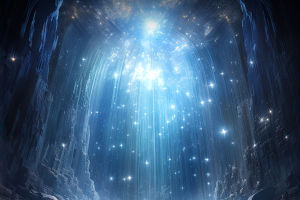Lykkers, have you ever looked up at the night sky and wondered if we are truly alone? The quest to find life beyond Earth blends astronomy and biology in ways that spark endless imagination.
This curiosity drives us to explore planets far from our own, searching for signs that these worlds could support life.
With every telescope, probe, and space mission, we peel back another layer of the universe, moving closer to understanding our cosmic neighbors and the possibilities that await us.
Setting the Scene for Discovery
When searching for alien life, the first step is understanding what makes a planet "habitable." Scientists focus on whether a planet sits in its star's "habitable zone"—a region where conditions might allow liquid water to exist. Water is essential because it's the foundation for life as we know it. Over recent years, discovering numerous Earth-like planets has given us a growing list of promising candidates.
Each new world adds to the possibilities, and by studying their distances, sizes, and compositions, we begin to paint a clearer picture of which planets could harbor life.
Decoding Habitable Clues
Studying a planet's atmosphere is key to finding life. By analyzing gases like oxygen, methane, and water vapor, scientists look for signs of biological activity. For instance, oxygen could indicate photosynthesis, while methane might point to microbial processes.
Instruments such as the James Webb Space Telescope are at the forefront of this research. By examining distant atmospheres, we gain insights into the diversity of planets across the galaxy, revealing worlds that might be very different from our own yet still capable of sustaining life.
Exploring Planets and Moons Nearby
We don't need to rely solely on distant stars. Our own solar system offers fascinating opportunities. Mars, for example, has ancient riverbeds and polar ice caps that hint at possible past microbial life. Icy moons like Europa and Titan are especially exciting because their subsurface oceans could harbor living organisms, hidden beneath thick layers of ice.
Future missions, including the Europa Clipper and proposed Titan landers, will study these moons in more detail, searching for chemical signatures or even direct evidence of life. Each mission brings us closer to understanding whether life is unique to Earth or a common feature in our cosmic neighborhood.
Technology and Innovation
Finding alien life is not just about curiosity; it relies on cutting-edge technology. Space telescopes, spectrometers, and robotic landers allow us to study distant worlds with incredible precision. For example, telescopes can detect the chemical fingerprints of gases in a planet's atmosphere, while landers can drill through ice or soil to collect samples.
Each tool gives us new ways to explore and test hypotheses about habitability, showing how human innovation is key to solving one of the universe's greatest mysteries.
Science Meets Society
The hunt for alien life isn't only a scientific endeavor—it also challenges our perspective on life itself. Discovering extraterrestrial organisms would redefine what we know about biology and our place in the cosmos. Suddenly, humanity would no longer be the only life form in the galaxy.
Philosophical, ethical, and societal questions would follow: How do we interact with alien ecosystems? What does life beyond Earth mean for our understanding of existence? These questions show that exploring the stars is as much about thinking as it is about discovering.
Looking Up Together
So, Lykkers, next time you step outside at night, pause and look at the stars. Imagine that somewhere out there, life might exist in ways we cannot yet comprehend. Every planet we explore, every moon we study, and every chemical signature we detect brings us closer to answering one of humanity's oldest questions: are we alone? By following the trail of water, atmosphere, and hidden oceans, we participate in a grand adventure together.
And with each discovery, we are reminded that the universe is far bigger and more mysterious than we ever imagined, inviting us to keep exploring with curiosity and wonder.


